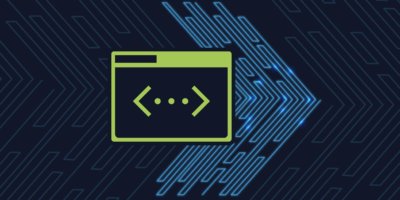Enterprise networks have exploded on the internet, forever changing how we build, manage, and maintain them. To harness the “exploded network,” organizations must learn to empower networking teams to extend network management and automation through compliance across on-prem and cloud infrastructure. As the number of network devices and device types increases, it will become increasingly more difficult to ensure that the configurations for all of the network elements are up to date with current standards for how the network should operate and who should have access to it.
With that said, such an explosion can present an opportunity for the networking team to prove their strategic worth by expanding their domain and utilizing a new set of tools and skills that are necessary to embrace this new digital environment.
From Speeds and Feeds To Innovative Services
Organizations must come to terms with the recent innovation in the networking domain, as the market shifts from “speeds and feeds” to a focus on the innovative services a programmable network makes possible. SD-WAN has proven this by evolving the traditional branch/remote office networking model and providing an innovative solution using Network Controller and low-cost internet connections to remote offices. With SD-WAN shifting user traffic across the internet, additional services are evolving to help network teams optimize and secure access to multi-cloud applications and SaaS services.
Network IT teams are shifting their investments toward innovative solutions that support flexible IT infrastructure such as compute and cloud storage. However, to gain the most out of these investments and effectively combat arising challenges, teams need a collaborative framework that accounts for multiple application development domains.
Achieving Governance Versus Control
Networks were originally built using physical routers and switches, allowing full control over the network and the creation of hard boundaries that helped to manage the flow of traffic. An exploded network means these boundaries are unclear and networking teams can no longer control them as before. As a result, organizations must realize that ensuring any sort of control over this new infrastructure will take more than just the networking team. This is especially as users continue to be dispersed at home, in an office, or a public area, with applications similarly dispersed across on-prem and hybrid cloud environments.
It’s time to move from control to governance – governance over this dispersed infrastructure with new tools to help network engineers get the most out of a network that holds no boundaries. This will require a modern solution to successfully address the challenges of network device configuration deployments. Such adaptations must address the existing on-prem infrastructure and cloud-native and SaaS-based networking services. It’s also crucial to apply end-to-end network governance with compliance and remediation across both on-prem & cloud-based network infrastructure. This shift will ensure that existing on-prem standards that have historically been in place can now be applied to this new network environment.
Combining Automation and Compliance
For legacy IT systems, network automation initiatives took a back seat while the focus remained largely on compliance. However, with the growing deployments of Application Programming Interfaces (API) based on cloud services, network automation is being brought to the forefront, with compliance standards falling. Recognizing this, it is crucial to make both compliance and automation equally valued assets among IT managers. Fortunately, API-based networking can provide the necessary data on network services that will help to determine whether the service is meeting compliance standards.
Additionally, with an increasing number of organizations modernizing their IT infrastructure through cloud-based services like AWS, a re-evaluation of compliance and automation is necessary for proper deployment. Compared to in-house data centers, AWS has significantly elevated the standards of speed and flexibility for IT teams. Network management tools supporting automation and compliance will be necessary for teams to continue down this path of next-generation efficiency.
Ensuring Trust and Confidence
Training network engineers to successfully face the evolution of the network and its move into cloud platforms also means equipping them with the proper tools necessary to manage such changes while they still complete compliance, remediation and configuration management tasks required as a network engineer. This will instill confidence within an organization’s NetOps and CloudOps teams that will prove invaluable in providing the compliance and validation needed to accelerate automation goals.
This also means establishing a single interface, exposing the capabilities of multiple systems in a common operational view that network engineers can trust to execute zero-touch deployment automations through cloud-based management. Only through automation can network engineers be expected to manage thousands of devices across the expanded network, but this will require reliable tools that can ensure uninterrupted services.
The exponential growth of the network and its resulting explosion on the internet requires completely new tools and skillsets for success. While overwhelming, it can be managed through proper training, equipping networking teams with the support necessary to keep operations running. Focusing on the shift to innovation, guaranteeing governance, combining automation and compliance goals while promoting trust among network engineers will help effectively manage the exploded network we have witnessed today.
Article originally published on Tool Box.






